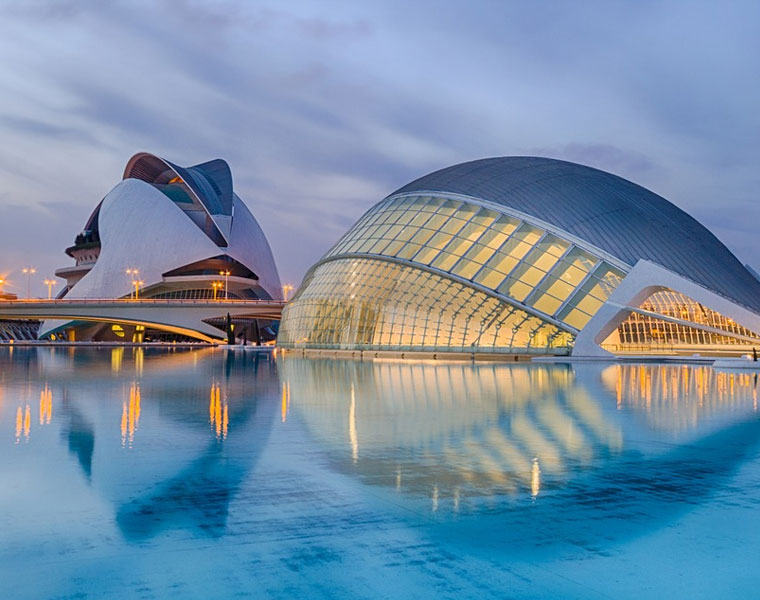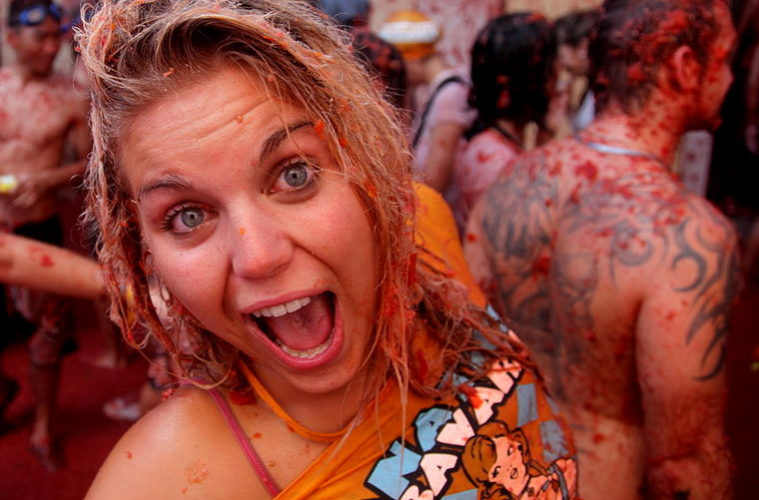Every August, the Spanish town of Bunol, Valencia, is host to La Tomatina Festival, a traditional tomato fight that turns the town, and its occupants, red.
What began as a food fight in 1945 was declared a Festivity of International Tourist Interest by the Secretary Department of Tourism in 2002. It’s such a popular event that participation has been restricted to ticket holders since 2013. But there’s plenty more to this corner of Spain than 150,000 kilogrammes of tomatoes being thrown at tourists.
Valencia is known as the City of Flowers and Light. The springtime bloom signals its greatest festival, Las Fallas, a celebration of St Joseph that lasts five days and five nights, like one long street party. Each day begins with La Desperta, the wake-up call, and the processions, crowds and fireworks continue until the Cavalcada del Foc (the Fire Parade) and La Crema (the burning) of falles – elaborate cardboard and paper-mache monuments filled with firecrackers.
Valencia is the third largest of Spain’s cities and a delightful mixture of old world tradition and contemporary flair. It’s transforming under the influence of its thriving cultural scene, and varied dining, entertainment and shopping options. But it remains true to its rich Moorish and Roman heritage, as its historic neighbourhoods, medieval alleyways and ancient architecture attest. With a number of golden beaches too, it really is a versatile city with plenty to offer everyone.
Valencia’s buildings are architectural references to Gothic, Baroque, Renaissance and Neoclassical styles set in complementary contrast with modern designs and modern materials. The city has a hop-on-hop-off service with two routes that takes in the major attractions, from the gothic Cathedral and UNESCO World Heritage-listed Silk Exchange to the futuristic Nou Mestalla stadium and the stunning Palau de les Arts Reina Sofia.
Although thought of by most as a traditional Spanish dish, paella is known in Spain as a traditional Valencian dish. Early paellas were made with water vole meat or eel, but fortunately improved living standards saw a change to ingredients with the introduction of chicken, duck, rabbit, and sometimes snails, or combinations of them. According to tradition, paella is cooked over an open fire of pine cones and orange and pine branches, which produces an aromatic smoke which infuses the paella. Certainly, if you want to sample this dish as it’s meant to taste, this is the city to try it.
Regardless of whether eating food or throwing it appeals more, it’s clear that Valencia, this most appealing and popular travel destination, is the perfect mix of old and new, just waiting for you to experience it.



